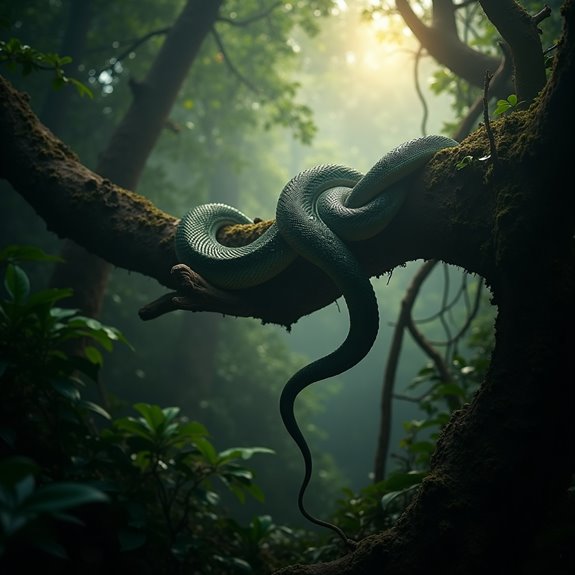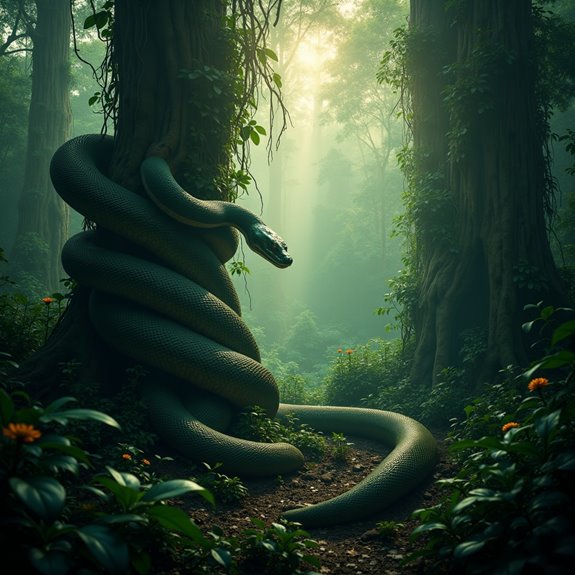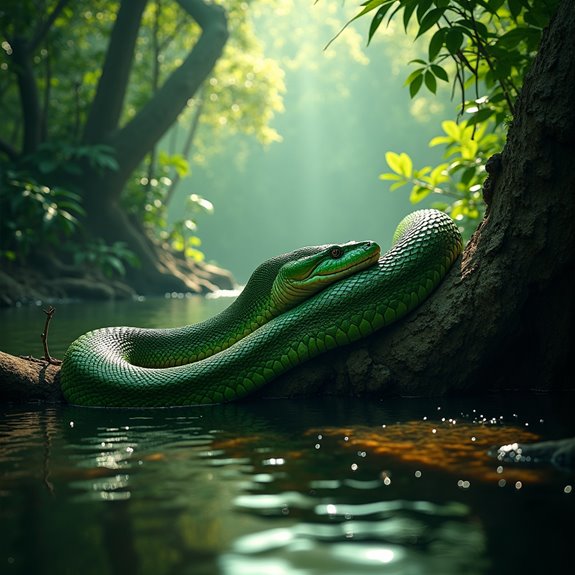Are Giant Snakes Still Roaming the Amazon?
Giant snakes, particularly anacondas, still attract attention in the Amazon. Indigenous legends and contemporary sightings keep the topic alive. In 2016, an encounter with a massive anaconda captured local fascination and sparked further investigation. While some accounts may stretch the truth, they raise important questions about the ecological role of these creatures. What does this mean for the Amazon’s biodiversity and conservation efforts? The answers might surprise those who think they know all there is to know.
Introduction

The Amazon rainforest, known for its breathtaking biodiversity, is home to some of the largest snake species on the planet. These giants, such as the anaconda and the green tree python, capture the fascination of researchers and adventurers alike. Spanning several regions, the Amazon’s unique ecosystems create ideal conditions for these snakes to thrive, showcasing their remarkable adaptations and hunting strategies. Many people near the Amazon regard these creatures with both awe and fear, giving rise to a host of stories and local lore. Understanding the habitat, behavior, and ecological significance of these snakes is essential, as it highlights their role in maintaining the health of the rainforest and promotes broader conservation efforts within this indispensable ecosystem.
Ancient Giant Snake Legends

Throughout history, indigenous cultures in the Amazon have woven tales of giant snakes into their folklore, believing these magnificent creatures possess both power and mystery. Often, these legends describe the anaconda, revered as a guardian of the forest or a symbol of fertility. Various tribes tell stories of brave hunters encountering enormous serpents, sometimes attributing the loss of livestock or even people to these majestic beasts. Many narratives include warnings about encroaching on their territory, suggesting that giant snakes punish those who disrespect nature. These legends frequently serve as metaphors, teaching respect for the land and its inhabitants. Such stories are passed down through generations, enriching the cultural tapestry of the Amazon and highlighting humanity’s connection to the natural world.
Notable Cases or Sightings

Numerous sightings of giant snakes in the Amazon have captured the imagination of locals and researchers alike. In 2016, a group of fishermen reported encountering a massive anaconda wrapping around their boat near the Rio Madeira. Describing it as over 30 feet long, they claimed the snake moved effortlessly through the water, leaving them astounded. Another notable sighting occurred in 2019 when a camera crew filming wildlife caught footage of a gigantic serpent slithering through dense foliage, sparking debate about its size. Locals often recount tales of snakes as large as school buses, further fueling interest in these elusive creatures. Such encounters, whether exaggerated or not, highlight the enduring fascination with the possibility of giant snakes lurking in the depths of the Amazon.
Common Theories or Explanations
While many sightings of giant snakes spark intrigue, several theories attempt to explain these reports. One common theory suggests that exaggerated tales arise from mistaken identity, where large anacondas or pythons are confused for larger creatures. Others propose that the dense, shadowy environment of the Amazon plays tricks on the eyes, leading to misinterpretation of size. Additionally, local folklore often amplifies these sightings, creating a cultural context that encourages belief in giant snakes. Some researchers argue that fear and fascination with snakes may distort perceptions, resulting in an inflated sense of reality. Despite ongoing debates, the combination of psychological factors, environmental illusions, and cultural narratives shapes the perception of these mythical serpents lurking in the Amazon’s depths.
Frequently Asked Questions
What Species Are Considered Giant Snakes in the Amazon?
In the Amazon, species like the green anaconda and the yellow anaconda are considered giant snakes. These enormous reptiles can reach impressive lengths, showcasing their dominance in the region’s diverse ecosystems.
How Large Can These Snakes Grow?
Giant snakes in the Amazon can grow up to 30 feet long, though most average around 15 to 20 feet. Their massive size and weight allow them to dominate their environment effectively.
What Is the Lifespan of a Giant Snake?
Giant snakes can live anywhere from 20 to 30 years in the wild. In captivity, they often thrive even longer, with some reaching up to 50 years, thanks to a controlled environment and proper care.
Are Giant Snakes Endangered in the Amazon?
Giant snakes aren’t officially classified as endangered, but habitat destruction and hunting threaten their populations. Conservation efforts are essential to protect these majestic creatures and guarantee they thrive in the Amazon’s rich ecosystem for future generations.
What Do Giant Snakes Eat in the Wild?
Giant snakes primarily hunt large mammals, birds, and reptiles in the wild. They often ambush their prey using stealth. Once they seize their target, they quickly constrict and consume it whole, showcasing their impressive hunting skills.


